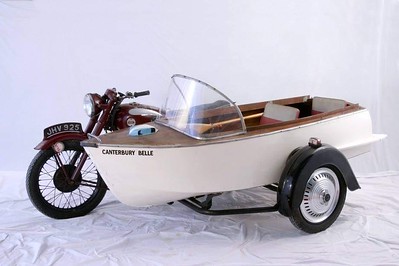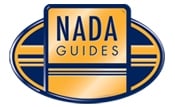|
|
1969 URAL MotorcycleDescriptionRare Russian URAL motorcyclePart of the collection of Pat & Harry Kraemer's rare European three wheel cars and motorcycles. Click here to shop in our store for Ural motorcycle parts Award history: 2019 First Place Vintage Motorcycle - Laytonsville Cruise In Second Place Vintage Motorcycle - Laytonsville Cruise In April Top 5 Motorcycle Award - Simple Transport August 2019 2016 First place vintage motorcycle at KGAI Open House Third place custom motorcycle at KGAI Open House Click here for a slide show of vehicles currently in the collection Here are our other sidecar rigs.  Visit the tech tips section of our site at http://flymall.org/magento/index.php/tech-tips.html for URAL manuals, tech tips, and instructional videos. Front tag made by Airport View Signs in Frederick Maryland - Click link below for their site. I have included the file here to assist others in having these types of tags made. To research Ural sale prices click on our Market Watch tab found at Flymall.org URAL History The Ural story begins in 1939, during the USSR’s pre-World War II planning. Despite the Molotov—Ribbentrop Pact, the Soviet Union knew it would soon be going to war against Adolf Hitler, the ruthless dictator of the German Third Reich. Joseph Stalin ordered the military to prepare all areas of operation, including the ground forces that would defend Russia against invading German Panzers, ground troops, and Special Forces. Having seen the effects of the Blitzkrieg against the Polish Army, mobilization was of paramount importance to Stalin and the entire USSR. A meeting was held at the USSR Defense Ministry to discuss what motorcycle model was most suitable for the Red Army. The Army had wanted to modernize its equipment after termination of the military conflict with Finland, as the motorcycles it had been using had not worked satisfactorily. Their technology was out-dated and the manufacturing quality left much to be desired. The official version of the Ural story reads that, after a long discussion and debate, the BMW R71 motorcycle was decided to most closely match the Red Army’s requirements for a combat motorcycle. Five units were covertly purchased through intermediaries in neutral Sweden and smuggled to Russia. Soviet engineers in Moscow busily dismantled the 5 BMWs. They copied every detail of the BMW design and made moulds and dies to produce their own engines and gearboxes in Moscow. Everything about the bike was reverse engineered. Early in 1941, the first trial samples of M-72 motorcycles were shown to Stalin, who immediately approved production of the motorcycles. Incidentally, one of these original BMWs survives and is on display at the factory museum. Harley-Davidson also copied the BMW design, and delivered about 1,000 Harley-Davidson XA (Experimental Army) flat-twin shaft drive motorcycles to the US Army during World War II. Meanwhile, in Japan, Riyushko was busy copying the Harley-Davidson V twins! A more likely story is that the BMW factory supplied the construction drawings and casting moulds as a result of the Molotov—Ribbentrop Pact, and these transfers of technology had taken place in support of their Soviet “friends” in different technological and industrial fields. Soviet engineers toured German aircraft factories and brought back complete cannons as samples. The OPEL Kadett was given to the Soviets just prior to the war; however, it commenced series production only toward the end of the war as the Moskvitch 400. In 1941, BMW began series production of R75, and did not resume production of R71. Supplying the Soviets with the superceded R71 model may have seemed a good idea at the time. A factory in Moscow was soon producing hundreds of Russian M-72 sidecar motorcycles. The Nazi Blitzkrieg was so fast and effective that Soviet strategists worried that the Moscow factory was within easy range of German bombers. It was decided to move the motorcycle plant further east, out of bombing range, into the middle of the resource rich Ural Mountain region. The chosen site was the small trading town of Irbit, located on the fringe of the vast Siberian steppes in the Ural Mountains. Irbit had, before the Revolution of 1917, been an important Trade and Fair center in Russia. The only substantial building in town was a brewery. It was soon converted into research and development headquarters, where long hours were spent preparing for the construction of a massive new production complex for the M-72. On October 25, 1942, the first M-72s were sent into battle. Over the course of World War II, 9,799 M-72 motorcycles were delivered to the front for reconnaissance detachments and mobile troops. The history of Ural began with the glory of helping to defeat the terror of Hitler’s armies on the Russian and European battlefields. After World War II the factory was renovated, and in 1950, the factory produced its 30,000th motorcycle. In the late 1950s, a plant in the Ukraine took over the manufacture of Urals for military use, and the Irbit Motorcycle Works (IMZ) began to build Urals for domestic, civilian consumption. The popularity of the outfits grew steadily among Russians, and in the 1960s, the plant was turned over to full non-military production. The Export History of URALs Started in 1953 The first Urals were exported in 1953, at first mainly to developing countries. In the late 1960s, deliveries to developed countries began, and since then more and more Urals have appeared on the road on every continent. Urals are a unique combination of price, ageless styling, and sidecar functionality. In November 1992, the State-owned factory transformed into Uralmoto Joint Stock Company. Uralmoto was a privatized entity, 40% of which was divided among management and employees through a grant, 38% of which was sold by auction with privatization vouchers (which went mostly to management and employees), and 22% of which was retained by the government. In early 1998, Ural was bought by private Russian interests; it is no longer a State-owned company. (Shortly after the purchase, in 2000, the government shares were redistributed to investors.) New ownership has brought new management, fresh ideas and production techniques, modernized design and updated technology, and above all, a commitment to quality control at all points of production. Ural motorcycles have been given a new lease on life. While the outward appearance of the engine retains the look of a classic Ural, quality control techniques and use of better alloying and casting, better engineering tolerances, better paint and chrome, make for a stronger, better bike. Everything good and unique about the old Urals has been maintained, including the inherently balanced design of a horizontally opposed flat twin engine with roller bearings in a solid frame. The main bike models built in the plant today are the heavy-duty Ural sidecar motorcycles, designed with rough Russian roads in mind, and the Solo sT. There are many places in Russia where only horses and Ural motorcycles can be used to transport gear where you need it. Ural motorcycles are equipped with four-stroke air-cooled flat-twin engines, a four-speed gearbox with reverse gear, shaft drive, two disc dry clutch, spring shock absorbers, and drum brakes. New solo and sidecar models have been developed recently to better meet the needs and expectations of Western markets. Ural is the only Russian manufacturer of heavy capacity motorcycles, and one of few manufacturers of sidecar motorcycles in the world. Besides sales of Ural motorcycles on the Russian market, they have also been exported to Australia, Britain, the United States, France, the Netherlands, Belgium, Spain, Greece, Norway, Finland, Sweden, Germany, Egypt, Iran, South Africa, Brazil, Uruguay, Paraguay, and numerous other countries. Over 3.2 million motorcycles have been delivered since the first M-72 rolled off the production floor. The future looks bright for Ural, the company is constantly improving its role as a versatile and economical form of transportation that is fun to ride and easy to maintain. Here is a four seat motorcycle:  View Harry's Ural Motorcycle Page Click here to shop in our store for Ural motorcycle parts Click here for a rare Ural 3 wheel camper Also pictured here is a Catomobile", amphibious car designed in the Soviet Union by the Demidov brothers in 1966, powered by a Ural engine. Suitable both in the street and in the water. On the road it could reach a speed of 120 mph and on water up to 50 mph. All exterior parts were made of glass fiber. Ural motorcycle engine was used, integrated by a forced cooling system (which used a ZAZ-966 car fan). As transmission components (clutch, gearbox), frame (suspension, wheels), controls ( steering, brakes) and electrical equipment, parts of ZAZ cars, (Zaporiz ' kyi avtomobilebudivnyi zavod). Here is a Ural MG 350  Click here for pictures of some enclosed sidecars Click here for pictures of a bike that you drive from the sidecar Here's another vehicle that you drive from the "car". Here are a few retractable sidecars:  Here is the Canterbury Belle sidecar boat rig. Constructed circa 1960, both bike and boat measured about eight feet in length, and could carry two people making the combined capacity four people! Deemed too expensive for mass production only five examples were built.  sidecar, sidecarrig, UralTechTip MotorcycleTechTip ThreeWheelerTechTip SidecarTechTip Equipment Specifications
Detailed Information
|
















